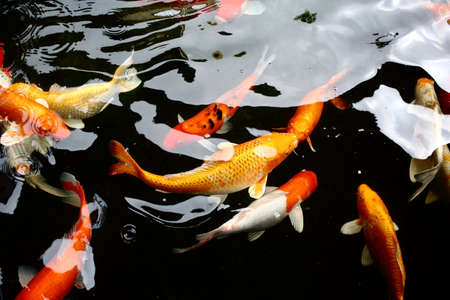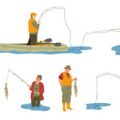1. The Importance of Respecting Wildlife While Fishing
When you head out to fish on America’s rivers, lakes, or coastal waters, you’re stepping into a world full of diverse wildlife and unique ecosystems. It’s not just about landing that big catch—it’s about being a responsible part of the environment and helping keep our natural resources healthy for future generations.
Why Mindfulness Matters
Every waterway in the United States is home to native species, some of which are found nowhere else in the world. These animals and plants all play a role in keeping the ecosystem balanced. When we fish without thinking about their needs, we can accidentally disrupt their habitats or even harm endangered species.
Impacts of Disrespectful Fishing Practices
| Action | Potential Impact on Wildlife |
|---|---|
| Littering (leaving fishing line, bait containers) | Wildlife can get tangled, ingest trash, or be poisoned. |
| Overfishing native species | Reduces populations and upsets natural balance. |
| Disturbing nesting areas (e.g., birds, turtles) | Interrupts breeding and may lead to fewer offspring. |
| Introducing invasive species via bait or boats | Can crowd out native species and damage habitats. |
How You Can Make a Difference
The good news is that every angler can help protect wildlife simply by being more aware. Following local regulations, properly disposing of waste, using barbless hooks when possible, and keeping an eye out for protected areas all go a long way toward keeping America’s waters vibrant and full of life.
2. Understanding Local Wildlife and Their Habitats
Sharing America’s Waters: More Than Just Fish
When we think about fishing, most of us picture just the fish. But our rivers, lakes, and coasts are home to a wide variety of wildlife. From playful otters in northern streams to majestic bald eagles soaring over open water, many species share these environments with anglers. Recognizing these animals—and understanding their needs—helps us fish responsibly and enjoy richer outdoor experiences.
Common Wildlife Found Near America’s Fishing Spots
| Type of Wildlife | Examples | Where You’ll Find Them |
|---|---|---|
| Fish | Bass, Trout, Catfish, Salmon, Redfish | Rivers, lakes, ponds, coastal waters |
| Birds | Bald eagle, Osprey, Great Blue Heron, Kingfisher, Pelican | Along riverbanks, lakeshores, coastlines |
| Mammals | River Otter, Beaver, Muskrat, Manatee (Florida), Harbor Seal (coasts) | Freshwater streams and rivers, wetlands, coastal bays |
| Reptiles & Amphibians | Turtles, Alligators (South), Frogs | Ponds, slow-moving rivers, marshes |
Why It Matters: Knowing Your Neighbors on the Water
The presence of birds like ospreys and herons usually signals healthy fish populations—they’re expert fishers themselves! Mammals such as beavers help create habitats that benefit both fish and other wildlife. Understanding how each animal fits into the ecosystem lets us appreciate the balance of nature and avoid disrupting it while fishing.
How Anglers Can Learn About Local Wildlife
- Field Guides: Pick up a regional bird or wildlife guidebook before heading out. Many guides have easy-to-use pictures and descriptions.
- Wildlife Apps: Free apps like Merlin Bird ID or iNaturalist can help you identify animals by photo or description while you’re outdoors.
- Talk to Locals: Chat with local anglers or park rangers—they often know which animals are common in the area and what signs to look for.
- Observe Quietly: Take a few minutes before casting your line to watch and listen. Birds calling or splashing mammals can tell you a lot about who’s sharing the water with you.
- Visit Nature Centers: Many parks have interpretive centers with displays about local wildlife and their habitats.
Tip: Keep a Small Notebook or Use Your Phone Notes App
If you see an animal you don’t recognize, jot down its color, size, behavior, and where you saw it. This makes it easier to look up later—and helps build your skills as both an angler and a naturalist.
![]()
3. Best Practices for Responsible Fishing
Catch and Release: Helping Fish Survive
Catch and release is a big part of responsible fishing in America. When you catch a fish you don’t plan to keep, handle it gently and return it to the water as quickly as possible. Use wet hands or rubberized nets to avoid harming the fish’s protective slime layer. Pinch down barbs on hooks or use circle hooks for an easier release. These simple steps can help fish survive after being caught so future generations can enjoy fishing too.
Proper Disposal of Fishing Line and Tackle
Fishing line, hooks, and other tackle left behind can be deadly to wildlife like birds, turtles, and even mammals. Always pack out everything you bring in—never leave fishing line or gear behind. Many American lakes, rivers, and piers provide special recycling bins for used fishing line. If you can’t find one, put your line in a sealed container before disposing of it at home. Proper disposal protects both wildlife and our favorite fishing spots.
| Do | Don’t |
|---|---|
| Use recycling bins for old fishing line | Leave line or hooks on the ground or in the water |
| Pack out all trash and tackle | Bury or burn fishing gear waste |
| Inform others about proper disposal | Ignore tangled wildlife or littered areas |
Obeying Seasonal Regulations and Limits
Each state in the U.S. has its own rules about when you can fish certain species, how many you can keep, and what size they must be. These rules are based on scientific research to protect fish populations during spawning seasons or when numbers are low. Always check local regulations before heading out—and remember, they’re there to keep our waters healthy for everyone.
| Regulation Type | Why It Matters |
|---|---|
| Seasonal closures | Protects fish during breeding times |
| Bag limits | Keeps populations stable for future anglers |
| Size restrictions | Allows young fish to grow and reproduce before harvest |
The Impact of Gear Choices on Wildlife and Habitat
Your choice of bait, hooks, and lures can affect more than just your catch rate—it can impact the environment, too. Non-lead weights prevent poisoning of birds like loons and eagles. Barbless or circle hooks reduce injury to fish and make catch-and-release safer. Avoid using live bait in sensitive waters where it might introduce invasive species. Every small decision adds up to healthier rivers, lakes, and oceans across America.
4. Minimizing Human Impact During Outdoor Adventures
Keep Our Waters Clean: Tackle Litter and Pollution
When we fish, it’s our job to keep rivers, lakes, and oceans as pristine as possible. Bringing a trash bag along for your trip can make a big difference—pack out all your garbage, including old fishing line, bait containers, snack wrappers, and any other waste you create. Don’t forget that even small items like cigarette butts or bottle caps can harm wildlife if left behind.
Simple Ways to Reduce Litter and Pollution
| Action | Why It Matters |
|---|---|
| Pack out all trash | Keeps waterways safe for wildlife and other anglers |
| Use reusable containers | Cuts down on single-use plastic waste |
| Recycle fishing line properly | Prevents entanglement of birds and fish |
| Avoid using live bait in sensitive areas | Reduces risk of introducing invasive species |
Respect Wildlife and Their Homes
Many animals use riverbanks, lake shores, and coastal dunes for nesting or raising young. Disturbing these areas can cause stress or even drive wildlife away from their homes. Always look for signs posted by local authorities about protected habitats. If you see bird nests, turtle eggs, or other animal homes, give them plenty of space.
Wildlife-Friendly Fishing Tips
- Stay on marked trails and designated fishing spots to avoid trampling plants or disturbing animals.
- If you bring pets along, keep them leashed so they don’t chase or harass wildlife.
- Avoid shining flashlights directly at nesting sites or burrows during night fishing.
Keep It Quiet: Enjoy the Sounds of Nature
Loud noises can scare away animals and disrupt their natural behaviors. Whether you’re in a boat or on shore, try to keep voices low and limit the use of music speakers. This not only helps wildlife but also gives everyone a more peaceful outdoor experience.
Leave No Trace: A Quick Checklist for Responsible Anglers
- Collect all gear before leaving—hooks, sinkers, bobbers, and bait containers.
- Check for micro-trash (small bits of plastic, wrappers) around your fishing spot.
- If you see litter left by others, pick it up—it sets a great example!
- Follow “catch and release” best practices to minimize stress on fish populations.
- Educate friends and family about respecting nature while enjoying America’s waters.
By making these simple choices every time we fish, we help protect America’s beautiful rivers, lakes, and oceans for generations to come.
5. Building a Culture of Conservation in the American Fishing Community
How Anglers Can Lead the Way in Wildlife Protection
Anglers play a huge role in preserving America’s rivers, lakes, and oceans. By making small changes and taking action, everyone who loves fishing can help protect wildlife and natural habitats for future generations.
Advocating for Wildlife-Friendly Policies
Getting involved in local or national policy decisions is easier than you think. Anglers can:
- Join or support organizations that promote sustainable fishing practices
- Stay informed about regulations and share knowledge with others
- Attend public meetings or write to lawmakers about wildlife-friendly policies
- Report illegal activities like poaching or dumping waste
Participating in Habitat Restoration Projects
Healthy habitats mean better fishing. Many communities offer volunteer opportunities for anglers to:
- Plant trees along riverbanks to prevent erosion
- Help clean up trash from waterways and shorelines
- Build fish habitats, such as installing brush piles or reef structures
- Monitor water quality and report pollution issues
| Action | How It Helps Wildlife | How Anglers Benefit |
|---|---|---|
| Riverbank planting | Reduces erosion, provides shade, improves water quality | Keeps fish populations healthy, improves fishing spots |
| Waterway cleanup | Removes hazards to fish and birds, prevents pollution spread | Makes fishing areas safer and more enjoyable |
| Building habitats | Creates shelter and breeding grounds for fish and aquatic life | Boosts fish numbers, supports sustainable angling |
| Reporting pollution | Catches problems early before they harm ecosystems | Puts community pride into action, protects favorite spots |
Nurturing Stewardship in Local Fishing Groups
Caring for the environment becomes a tradition when shared with friends and family. Anglers can:
- Mentor new anglers on catch-and-release techniques and responsible behavior on the water
- Create or join local conservation clubs
- Organize educational events about wildlife protection
- Share success stories about positive changes made by their group
The Ripple Effect of Stewardship
When one person makes a positive change, it encourages others to do the same. By working together, anglers across America can ensure that our rivers, lakes, and oceans remain vibrant places where both people and wildlife thrive.

